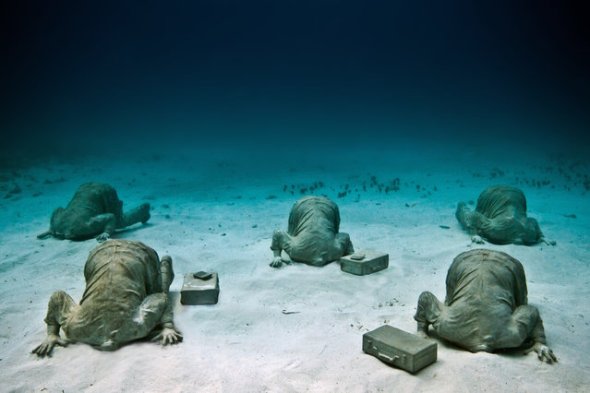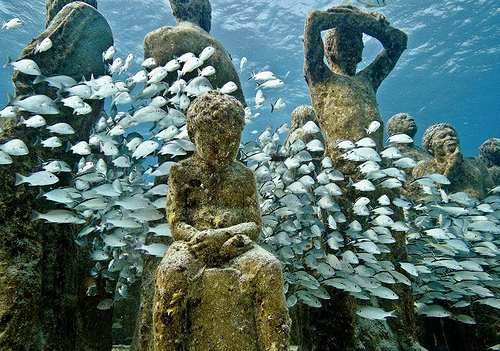If you have never had the highly pleasurable opportunity to visit one of #Mexico’s most captivating cities, there are plenty of tours in and around #playadelcarmen designed to create memories that will last for a lifetime.
There are a plethora of action-filled, scenic excursions and adventure parks only minutes outside of Playa. However, if you are the type of traveler who prefers to explore off the beaten path, and see the country from a more personal perspective, here are 5 unique ways to experience Playa del Carmen and the spectacular #MayanRiviera:
1) Snorkeling in the Yal-Ku Lagoon in Akumal
Located about 20 minutes south of Playa del Carmen, this lagoon is home to dozens of species of tropical fish, coral and sea turtles. The water is crystal clear and only 6-15 feet deep at the maximum depth. It is open daily from 8am-5:30pm with a cost of about 15Usd for admittance and snorkel gear. The pristine location made for one of our family’s most memorable days. Our children were young and snorkeled for hours off the convenient platforms, were fascinated by the live coral, and enjoyed the picnic under the palapas.
For reviews and directions, please visit https://plus.google.com/100620060318431566554/about?gl=mx&hl=en
2) Gorilax Jungle Park near Puerto Morelos (on the Cenote Route)
Approximately 45 minutes north of Playa del Carmen, thrill seekers and bucket listers can zip line a 2 km circuit over the enrapturing jungle canopy. An ATV will take you for an off road adventure to a gorgeous, natural cenote where you can swim or zip line into the cool, glistening waters. Bikes are available for riding through the jungle paths and bottled water, a light lunch as well as soda or beer is included in the tour package. Transportation is available from Playa Del Carmen and there are 3 tour schedules to choose from- 9am, 10:30am or 12pm.
More information provided at https://www.facebook.com/pages/Gorilax-Jungle-Park/610346082354412
3) Horseback riding at Blue Venado
This chic beach club is a hidden treasure and is nestled along a tranquil piece of the glorious Mayan Riviera coastline. Only 10 minutes south of Playa del Carmen, the horseback riding tour includes a guided journey through the jungle and along virgin white-sand beaches, a visit to a cenote (a fresh-water swimming hole), snacks, bottled water and use of the beach club facilities (lockers, showers and towels).
For more info or to book a tour, please go to http://bluevenadobeachclub.com/english/tours_activities.html
4) Paddle Boarding at Boga Yoga in Tulum
An alternative experience to a 24/7 beer and food binge fest at an all-inclusive hotel, this stand up paddle boarding excursion will be one you will forever remember. Transportation is provided from the town of Tulum, (45 minutes south of Playa del Carmen) to and from one of the company’s idyllic locations in and around Tulum area, including awe-inspiring cenote and lagoon settings. Your day of soulful rejuvenation begins with an instructional class and a 1.5 hour Boga Yoga class after which you may paddle at your leisure. A photo session during and after the class is also included in the mini-retreat package as is 1 organic detox, cold-pressed juice and 1 raw vegan energy ball.
For more information, visit http://www.supyogatulum.com/#!supretreatsandtours/cofg
5) Wild Dolphin Encounter in Sian Ka’an
This adventure definitely takes you off the beaten path into the Sian Ka’an Biosphere Reserve about 1 hour south of Tulum. The road is on rough terrain but the nature-filled excursion is well worth the trip! This eco-tour takes you through parts of over 1.3 million acres of protected wetlands which consist of mangroves and 70 miles of the world’s second largest barrier reef. The intoxicating beauty you will experience on the tour will be etched in your memories for a lifetime as you will encounter dolphins and manatees swimming in the wild, as well as a vibrant array of exotic birds and tropical fish. Included in the tour are transportation to and from the lodge, snorkeling in the nearby reef, a rare opportunity to observe starfish, dolphins and other wild marine life and an authentic Mexican lunch.
Please visit http://www.siankaan-tours.com/sian-ka-an-tours.html for more information.












